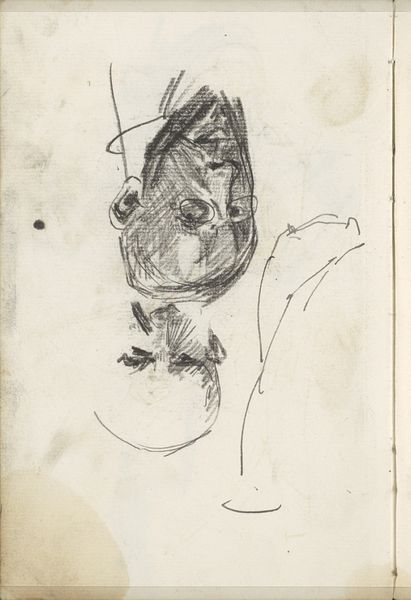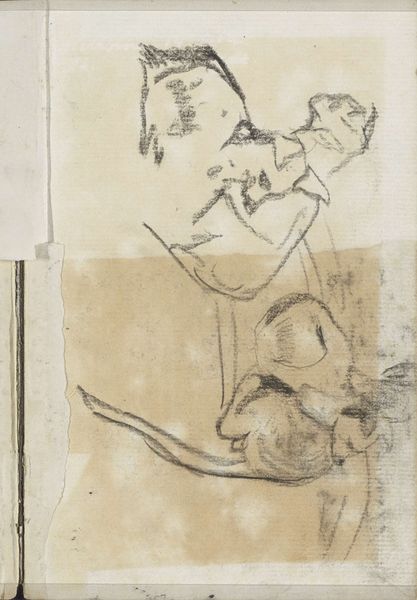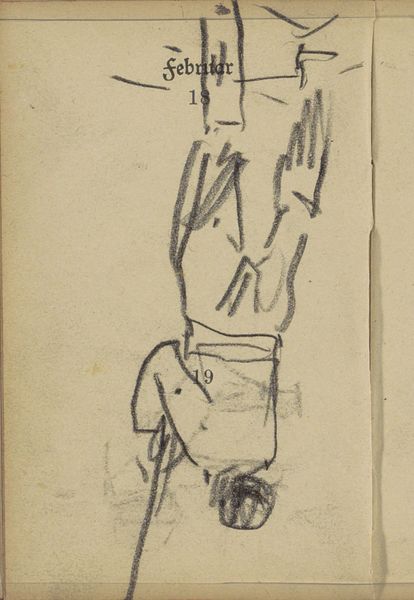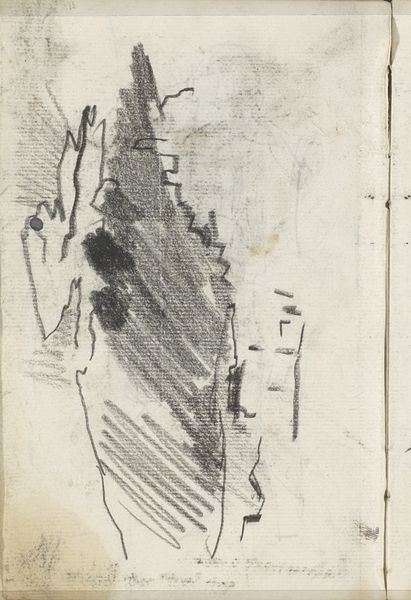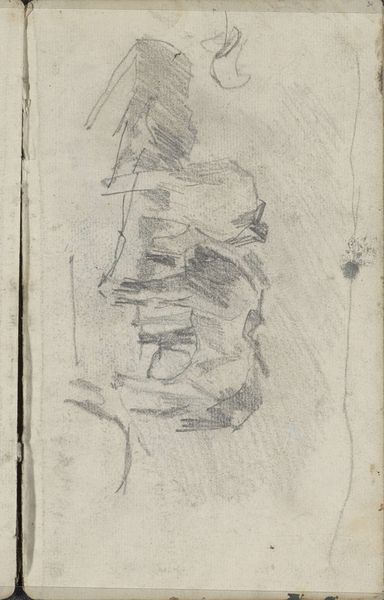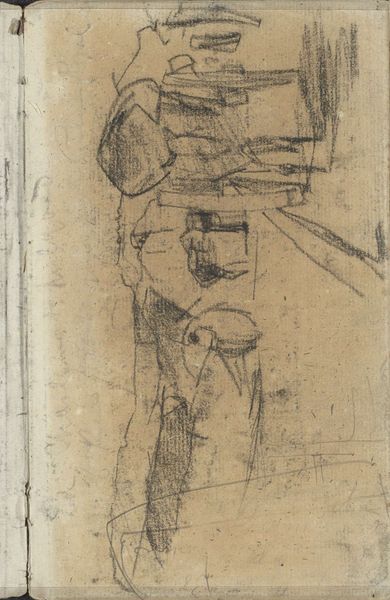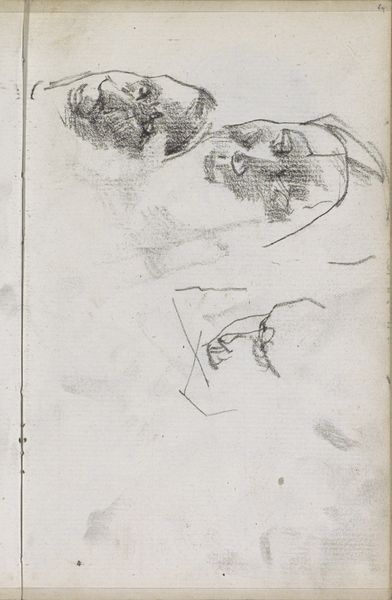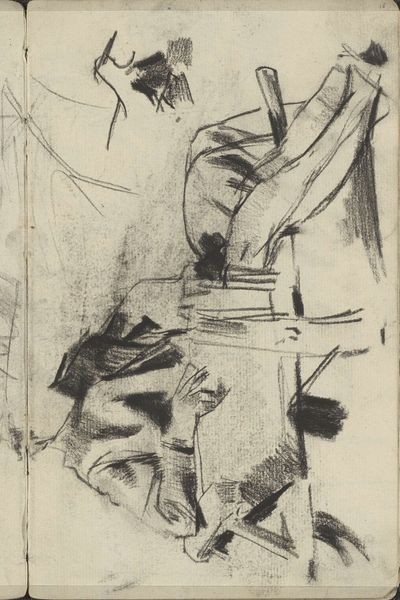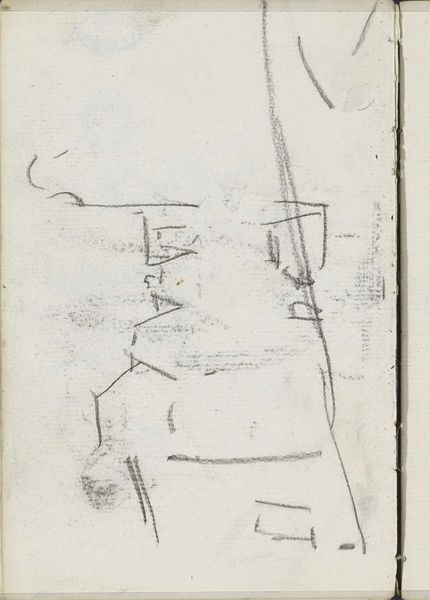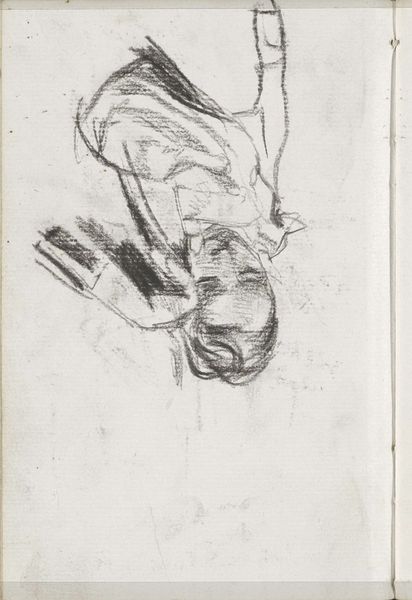
drawing, paper, pencil
#
portrait
#
drawing
#
impressionism
#
pencil sketch
#
figuration
#
paper
#
pencil
Copyright: Rijks Museum: Open Domain
Curator: Welcome. We are looking at "Figuurstudies," or "Figure Studies," a pencil drawing on paper by George Hendrik Breitner, created between 1884 and 1886. It’s part of the Rijksmuseum collection. Editor: The rawness of it really strikes me. There's a vulnerable quality to these almost ghost-like figures emerging from the paper. It feels intimate, like we're looking at something intensely private. Curator: It does feel like a peek into Breitner's sketchbook. What's fascinating is how these studies relate to his larger body of work. He was deeply engaged with capturing everyday life in Amsterdam, often focusing on the working class. These studies suggest the preparatory work underpinning those images, perhaps hinting at the sitters he planned to include. Editor: Right. And I wonder about his motivations for focusing on these subjects. Was it an attempt to elevate their social standing, to grant them a visibility they were often denied? Or was it simply an artistic exercise? There is an element of voyeurism in viewing studies, but the stark reality and detail that the studies present can lend insight to the circumstances of the sitters, an historical record if you will. Curator: It’s a tricky question. Breitner was certainly influenced by the Realist movement and its focus on depicting the world as it is. But the late 19th century was also a time of growing social consciousness and debates about class inequality. These drawings do present a direct view of humanity beyond the polished presentation of his formal paintings. Editor: Absolutely. Looking at it from a contemporary lens, the composition calls into question who has the right to depict whom, especially in a historical context laden with power imbalances. What does it mean for a middle-class artist to document working-class subjects, and how can we, as viewers, engage with this history ethically? Curator: Those are vital considerations, reminding us that the aesthetic value of a work is intertwined with the socio-political conditions of its creation and reception. Editor: This piece compels us to reckon with art history’s silences and biases, challenging us to forge a more equitable visual landscape today. Curator: A crucial point indeed. Breitner's studies offer insight to consider his creative process, but also provoke larger dialogues about representation and historical responsibility.
Comments
No comments
Be the first to comment and join the conversation on the ultimate creative platform.

